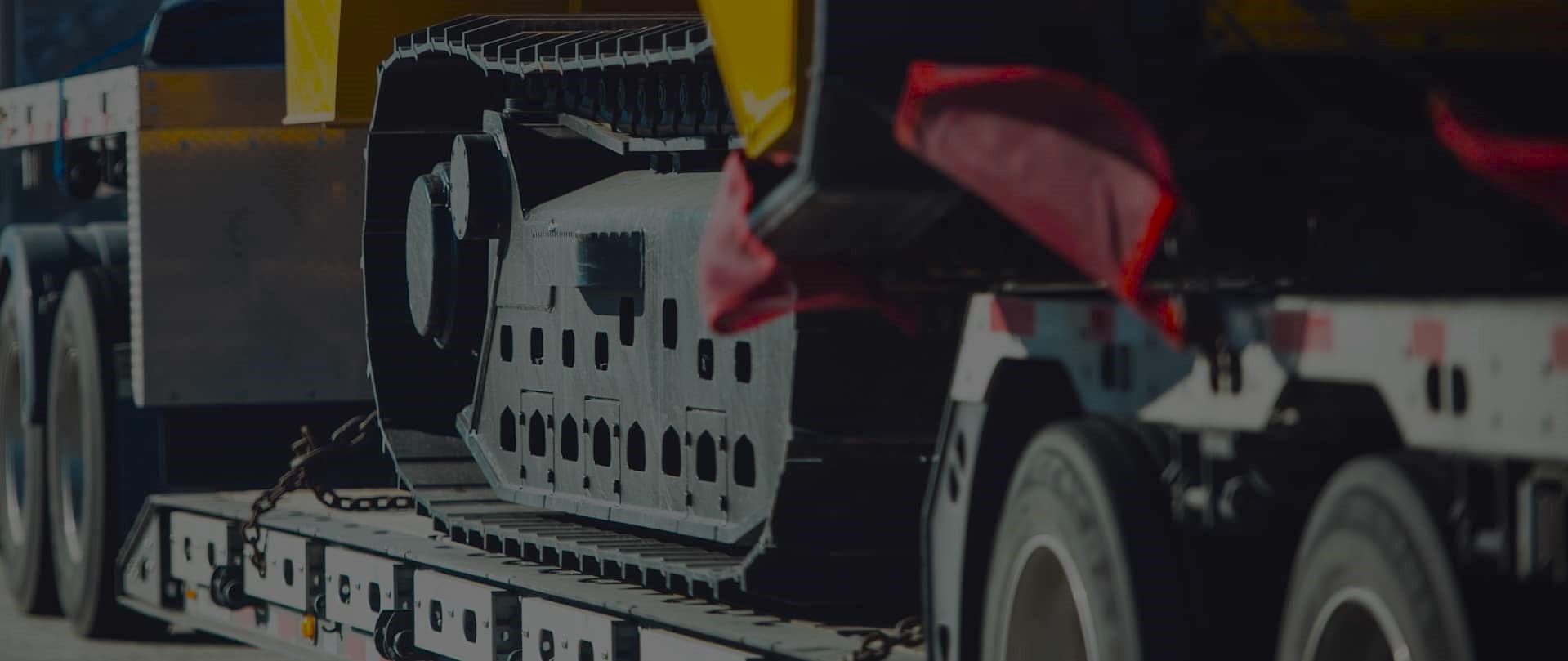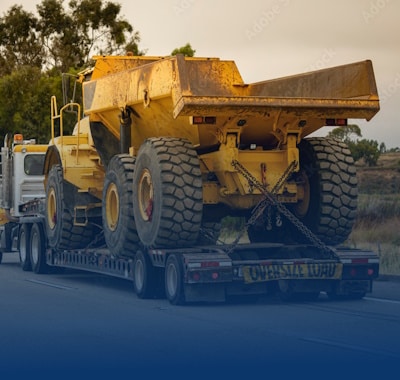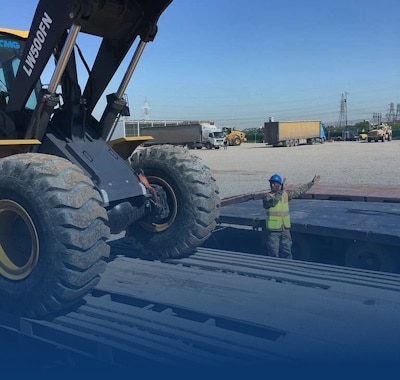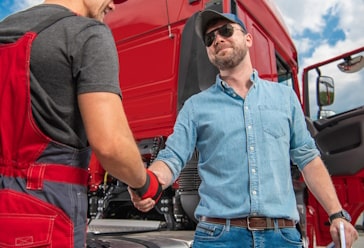Navigating Rocky Mountain Winter Closures: Oversize Route Options
Freedom Heavy Haul can offer expedited Pickup and Delivery for any size shipment anywhere in the USA. Contact us today for No Hassle, No Pressure Pricing.
This Ultimate Guide is your future-ready planning companion for Rocky Mountain winter closures and oversize route alternatives. It helps drivers adapt timing, gear, and choices to shifting elevation weather and traction rules while keeping safety front and center.
Elevation changes from Denver (5,280 ft) to Winter Park (≈9,000 ft) can flip clear skies into whiteouts in 40 miles. I-70 crosses three distinct weather zones and climbs to the Eisenhower Tunnel at 11,158 ft, where wind and snow grow stronger near the Divide.
Expect rapid shifts. A single forecast for your destination won’t cover conditions along a climb. Chain and traction laws change by elevation, and closures like Independence Pass or Trail Ridge Road force alternate plans.
This guide previews practical gear tips, vehicle and driver readiness, permit and clearance concerns for heavy haulers, and data sources to monitor road work, avalanche holds, and extended emergency response times that can add hours to travel.
Use layered planning—check live feeds, have backup communications, and match equipment to changing condition zones to reduce risk and improve outcomes.
Why winter closures in the Rockies demand a different playbook
A quick drop in temperature and a change in traction rules can turn a routine drive into a compliance challenge in high-elevation passes.
User intent: You want dependable ways to pick a safe route when conditions deteriorate, plus clear guidance on what equipment and timing will keep you moving. This section frames practical steps for trip planning, service expectations, and on-road choices.
- Front Range forecasts often miss the 15–20°F swings that show up above 8,000 ft. That gap changes conditions fast.
- Learn to predict traction law activations so you meet checkpoints before they stop you.
- Prepare equipment for cold that kills batteries, shifts tire pressure, and cuts engine power.
- Expect some transport service options to pause or reroute during surges, affecting pickups and schedules.
Whether you’re driving a van or managing a fleet, this guide gives the knowledge to convert elevation-driven weather into actionable planning. The goal is to help you choose the least-risk option, not just the shortest path.
Elevation weather zones that flip conditions within miles
A short climb can swap calm valley weather for fierce summit winds and whiteouts near the Divide.
Front Range to the Continental Divide: three fast-changing bands.
Band 1: Denver to Georgetown (≈5,280–8,530 ft)
This lower band often stays wet or icy, with milder wind. Road signs and traction laws may not activate here yet. Expect predictable weather, but watch for icy spots in shaded areas.
Band 2: Georgetown to the tunnel area (≈8,530–9,035 ft)
On the approach to the tunnel, snow and gusts intensify. Lenticular clouds can warn of strong summit winds even when valleys feel calm. Vehicle systems like turbochargers and cooling systems begin to behave differently.
Band 3: Silverthorne to Vail (≈9,035–8,150 ft)
Orographic lift makes the western slope snowier here, often producing the heaviest accumulation despite falling elevation. Visibility and traction can change in minutes.
“Always plan for the band you are about to enter, not just the area you just left.”
At higher elevations engines lose about 3% power per 1,000 ft. Batteries may lose 20–40% range in extreme cold. Tire pressure drops roughly 1 PSI per 10°F, cutting grip when snow is wind-packed.
- Read clouds and wind cues to predict deterioration.
- Slow earlier, downshift before steep grades, and use safer pullouts ahead of exposed summits.
- Match equipment to the band you will cross rather than the one behind you.
Seasonal patterns, traction laws, and the passes most likely to close
Seasonal shifts in Colorado send traction rules into action well before valley roads show wear. Expect chain controls to run roughly September through May, though exact start and end fluctuate by system. Colorado Department of Transportation often updates requirements daily by elevation.
CDOT traction rules and what to carry. Rules apply by vehicle class: two-axle autos may only need traction devices, while commercial rigs face stricter limits. Carry proof of vehicle class, permits, and approved traction devices ready for inspection.
Pass realities you must plan around
Independence Pass (CO‑82) usually shuts from late October to late May, adding nearly 200 miles to some trips. Trail Ridge closes above 9,500 ft on the same seasonal cadence. Guanella can close quickly in active storms, often with little warning.
Loveland Pass stays open year-round but reaches 11,990 ft and has exposed sections with no guardrails. Whiteouts and packed snow occur here often, creating serious hazards.
- Above 9,000 ft, shaded curves hold snow and snow ice long after valley pavement melts.
- Read CDOT alerts and local advisories to avoid checkpoints that could force you to turn back.
- Anticipate convoy waits after avalanche control; add time for enforcement zones.
“Respect alerts and carry the right equipment — traction devices save time and lives.”
Practical experience: pick a vetted alternate in advance, keep communications charged, and treat traction compliance as non‑negotiable. That approach protects your safety and keeps traffic moving through critical corridors.
Rocky Mountain winter closures and oversize route alternatives
High-elevation checkpoints and tight clearances force many haulers to rethink a planned crossing before departure.
Choosing routes that fit your width, height, weight, and permit limits means mapping clearances, bridge heights, and hazmat rules before you roll. Permits can require a specific crossing; that may send a load through a pass instead of the Eisenhower Tunnel when the tunnel has limits for tall or wide loads.
When I-70 narrows your options: Eisenhower Tunnel vs. Loveland Pass
The eisenhower tunnel is the primary I-70 crossing of the continental divide and often offers the safest exposure for long hauls. But tunnel rules can restrict certain vehicles, forcing a shift to Loveland Pass at nearly 12,000 ft.
Loveland introduces steep grades, high wind, no guardrails in places, and sudden whiteouts. Drivers face tighter turn radii and narrow shoulders that demand specific equipment and expert handling.
- Pre-qualify routes by measuring height, width, and turn clearances at structures and passes.
- Plan for chain control segments, staging areas, and safe pullouts for inspections and emergency checks.
- Use a responsive service partner—customers cite Freedom Heavy Haul for real-time reroutes and reliable heavy equipment transport.
Deciding whether to wait for a tunnel window or divert to the pass requires reading conditions reports for stability and traction, not just snow totals. If traction devices and braking stability are uncertain, choose the option with the best pullout and staging support.
“A proactive dispatch team and the right equipment keep high-value loads moving even when the Divide tightens plans.”
I-70 corridor briefings: Eisenhower Tunnel, Vail Pass, and Summit County
The I-70 corridor often forces split-second decisions when weather and traffic converge near the Divide.
Real-time choices between tunnel, pass, and weather windows
Real-time decisions
Blend elevation-focused forecasts with live road conditions and plow timing. Check CDOT feeds, tower cams, and live reports before committing to the Eisenhower Tunnel or a high pass alternative.
Hold for a maintenance window if visibility drops or chain control status flips. Small delays often beat getting staged at a checkpoint for hours.
Brake management on steep grades
Long descents demand early downshifting and cooling gaps. Brake fade occurs fast when systems overheat on sustained declines.
Identify runaway ramps early. Approach at reduced speed, signal well, and choose the ramp with the clearest entry lane to avoid blocking traffic.
Why snow can worsen on the western side
Orographic lift often increases snow toward Vail Pass even as elevation falls. Expect heavier accumulation west of the tunnel; conditions can shift from slushy to packed in minutes.
“Plan for the band you are about to enter, not the one you just left.”
Summit County choke points and quick checklist
In storms, staging areas near Silverthorne and Frisco become busy. Use designated pullouts for chain fitting and avoid stopping in travel lanes.
| Issue | Key action | Where | Why it matters |
|---|---|---|---|
| Chain control change | Confirm status before Silverthorne | Silverthorne staging | Prevents being forced to turn back or wait |
| Brake heat | Use engine braking, pause to cool | Eisenhower to Georgetown | Reduces risk of brake failure on steep grades |
| Western slope snow | Expect heavier accumulation, slow early | Vail Pass approaches | Orographic lift increases snowfall intensity |
| Passenger safety | Secure cargo, brief riders, increase gap | Buses, vans on exposed segments | Keeps occupants safe during sudden condition changes |
- Quick driver checklist: confirm chain rules, inspect brakes after long grades, verify visibility thresholds.
- Experience tip: time crossings for quieter maintenance windows and fuel before bottlenecks.
Winter Park when Berthoud Pass is closed: practical detours
When Berthoud Pass is shut, drivers heading to Winter Park need clear, tested detours that balance time and safety. This short guide compares three main options, plus towns to wait in if conditions worsen.
The Kremmling Route: year-round reliability and key cautions
Best pick for steady travel without seasonal limits. Follow I-70 west to Silverthorne (Exit 205), take CO-9 north past Green Mountain Reservoir, then US-40 through Hot Sulphur Springs and Granby to Winter Park.
Distance: ~152 miles; time: ~2h50m. Watch for wildlife and higher collision spots between Silverthorne and Kremmling.
Poudre Canyon Access: long but bypasses Eisenhower Tunnel and Vail
This path runs I-25 to Fort Collins, US-287 to Ted’s Place, CO-14 over Cameron Pass, then CO-125 to Kremmling and US-40 to Winter Park.
Distance: ~241 miles; time: ~4h53m. Use it when you need continuous services and steadier road conditions despite extra miles.
National Park seasonal bypass: spectacular, time-consuming
The park bypass uses US-36 to Estes Park, US-34 (Trail Ridge Road) to Grand Lake, then US-40 to Granby. It is scenic and seasonal (late May–Oct). An entrance fee applies and altitude exposure is high.
Distance: ~147–175 miles; time: ~3h42m. Choose this for daytime travel when roads are open.
“Pick the path that matches daylight, vehicle clearances, and current weather conditions — miles saved are not worth unsafe driving.”
Where to wait: Empire and Georgetown on the east offer short or extended hold options. On the west, Winter Park, Fraser, and Granby provide fuel, food, and shelters.
| Detour | Distance / Time | Key caution | When to use |
|---|---|---|---|
| Kremmling Route | 152 mi / ~2h50m | Wildlife; collision hot spots on CO‑9 | Year-round; go-to detour |
| Poudre Canyon Access | 241 mi / ~4h53m | Longer drive, canyon curves | Bypass Eisenhower Tunnel and Vail |
| National Park Bypass | 147–175 mi / ~3h42m | Seasonal, entrance fee, high altitude | Late spring–fall; scenic daytime option |
- Decide using current road conditions, elevation weather, daylight left, and driver confidence with canyon driving.
- Detours may push travel to 6–8 hours during heavy traffic; conserve fuel, food, and battery power.
- For large loads, confirm clearances and staging before committing; chain rules can differ from Berthoud’s status.
Equipment, traction devices, and vehicle prep for mountain months
Pre-trip verification of key systems prevents many on-road failures at high altitudes. Start with a short checklist and confirm each item before you leave. That saves time and keeps crews safe when conditions change.
Approved traction by vehicle class
Traction rules vary by class; aftermarket devices must meet standards. Two-axle autos need certified tire chains or approved cable systems. Commercial rigs require heavy‑duty chains or approved traction alternatives that match GVWR limits. Verify markings and manufacturer specs before a checkpoint.
| Vehicle class | Common approved device | How to verify |
|---|---|---|
| Passenger cars | Tire chains / cables | Manufacturer label & size match |
| Light trucks | Auto-rated chains | Rated load & clearances |
| Commercial rigs | Heavy-duty ladder chains | GVWR spec & vendor cert |
Survival kits, communications, and power
Pack a 12–24 hour kit: thermal layers, insulated boots, water, calorie-dense food, blankets, chemical warmers, a shovel, and visibility tools. Keep traction aids and reflective triangles within reach so you can fit gear safely away from traffic.
Add redundant communications: a satellite messenger or PLB, two-way radios, and offline maps for canyons and basins with poor cell signal. Check battery state of health before high-elevation travel; expect starting capacity loss and plan fuel reserve.
Safety note:Review brakes, cooling, and tires in pre-season checks and again mid-season. Thin air raises engine loads on climbs while long descents stress braking systems.
Advanced monitoring: turn data into safe, on-time routing
Real-time monitoring turns scattered reports into reliable decisions when conditions shift fast on high-elevation corridors.
Layer your sources. Use CDOT live feeds, CAIC avalanche bulletins, and elevation-specific model outputs together. Each source fills gaps the others miss.
CDOT, CAIC, and elevation-specific forecasts you must track
Check colorado department transportation updates for plow timing and official road conditions. Cross-verify with CAIC for avalanche risk that weather apps omit.
| Source | What it adds | Use when |
|---|---|---|
| CDOT | Real-time closures & road conditions | Confirm pass access |
| CAIC | Avalanche risk layers | High-snow storm cycles |
| Elevation models | Summit vs town forecasts | Vail Pass vs Vail town checks |
Wind, microclimates, and interpreting scattered condition reports
Watch for lenticular clouds and ridge/valley splits; wind can destabilize high-profile vehicles quickly.
Map cold pockets like Fraser Valley where temps fall below nearby towns and create black ice. Log your observations by segment and time to sharpen future route planning.
“Cross-verify multiple sources before committing to exposed corridors.”
- Use systems thinking: confirm plow reports, avalanche notices, and summit forecasts before you go.
- When reports scatter, treat patterns of incidents as a warning; a lull may offer a short window, not a guarantee.
Emergency realities on mountain roads: plan for delays, not minutes
Storms can trap travelers for hours on high passes. Treat every trip as if a short delay could become a long one. Pack basics and set check-in plans before you go.
Case studies: Thanksgiving storm, brake failure, and blackout
Thanksgiving 2019 saw a 40°F drop and an 18-hour standstill on I-70 between Georgetown and the Eisenhower Tunnel. Many lacked warm layers and faced hypothermia risk. That event shows why you pack for worst-case delays even when weather seems mild.
A Loveland Pass descent in another incident featured brake failure. The driver used engine braking and emergency techniques to stop safely. Pre-trip brake checks and respecting long-grade heat buildup save lives and protect vehicles.
In 2021 a Summit County power loss knocked out cell towers. Motorists with satellite communicators were helped within hours, while others waited 12+ hours. Redundant comms and a prearranged check-in plan shorten rescue time in remote areas.
Response time variability, avalanche zones, and hospital access
Emergency responses in major storms commonly take 4–6 hours. Avalanche mitigation can pause movement on I-70 near Georgetown or CO-91 near Copper until risk drops. Know nearest medical access and expect delays when storms strain systems.
“Delay-first thinking — conserve fuel, rotate heat safely, and ration supplies — keeps people safer during long holds.”
- Before you go: confirm weather conditions, charge comms, and brief riders on passenger safety.
- If stuck: keep exhaust clear of snow, use visible markers, wear reflective vests, and place triangles where safe.
- For buses and vans: secure loose items, manage cabin temperature, and communicate timelines calmly to passengers.
Ready for the next winter window: a pro-grade planning wrap-up
Ready for the next winter window: Professional teams set a primary plan, two alternates, and clear triggers for when to change course.
Do this each trip: confirm elevation-specific forecasts, verify traction controls, list needed equipment, and notify your dispatch service partner before departure.
Log times, temps, wind, and segment delays to build useful knowledge for future travel. Keep compliant traction devices, a winter kit, redundant comms, brake/cooling checks, and tire rituals ready.
Work with experienced service teams. Responsive partners can reroute quickly as conditions shift and keep drivers informed minute by minute. If visibility, wind, or surface conditions cross your preset limits, stand down and reassess.
With simple systems, proper tools, and practiced planning, you can seize safe windows and keep operations on schedule in colorado winter conditions.







